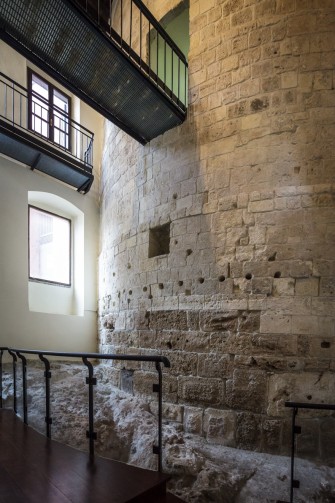The Pisans, having obtained the hill that would be named Castellum Castri de Kallari, began its fortification from 1217. The city wall, interspersed with more than 20 towers joined by a patrol path protected by a crenellated parapet, would stretch for 1640 meters.
Such fortification work constituted one of the most splendid examples of military architecture of the Middle Ages.
The Passarina Tower, with its twin Tedeschina, closed the northern front of the castle.
Today it is visible, only in part, in Arsenale Square, on the right side of the Palazzo delle Seziate, and on Buoncammino Avenue, on the left, turning from Porta Cristina.
Semicircular in plan, it has over 9 meters in diameter and as much in residual height; like the other towers, the inner side was open with exposed wooden mezzanines, while the upper floor, in continuity with the curtain wall, must have had a crown of battlements.
In the 16th century it became the Munitions Tower but, due to changing defensive needs, it was lowered and absorbed, along with the Tedeschina, into the Bastion of the Conception; in 1575 a curtain wall joined it to the Porta dei Cappuccini (near today’s Porta Cristina), giving rise to what would later become Arsenale Square.
Towards the end of the 17th century, in the space until then occupied by the curtain wall that had joined it to the Tower of San Pancrazio, the Palace of the Seziate was built; in 1839-40 the Palace, just before raised by one floor, ended up encompassing the tower, called, then, Torrione delle Seziate.
In the 1980s it was the subject of restoration work involving Arsenale Square, following which it is possible to enter the interior of the Seziate curtain wall to admire the intact wall face of the tower. Proceeding from the bottom, one observes some ashlar blocks from the Punic period on which rest the squared ashlars of strong stone and limestone partitioning of Pisan work that go down in size following the tapering of the tower. The upper part of the tower now houses some offices of the Soprintendenza BAPSAE of the Provinces of Cagliari and Oristano.









